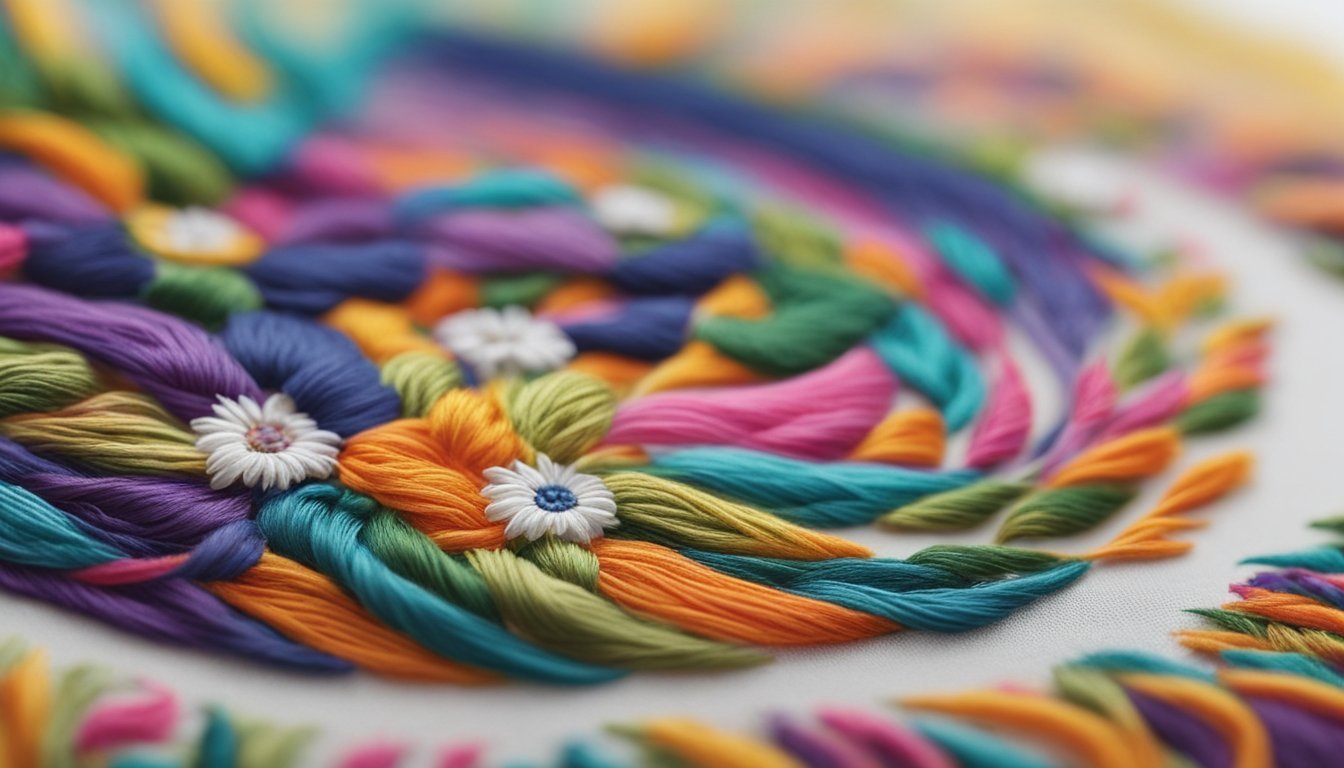Embroidery is a fantastic way to express your creativity and add a personal touch to your projects.
If you’re looking to take your skills to the next level, experimenting with new techniques can really make a difference. Here are seven embroidery techniques that can help you elevate your craft and create stunning pieces.

Embroidery is a fantastic way to express your creativity and add a personal touch to your projects.
If you’re looking to take your skills to the next level, experimenting with new techniques can really make a difference. Here are seven embroidery techniques that can help you elevate your craft and create stunning pieces.
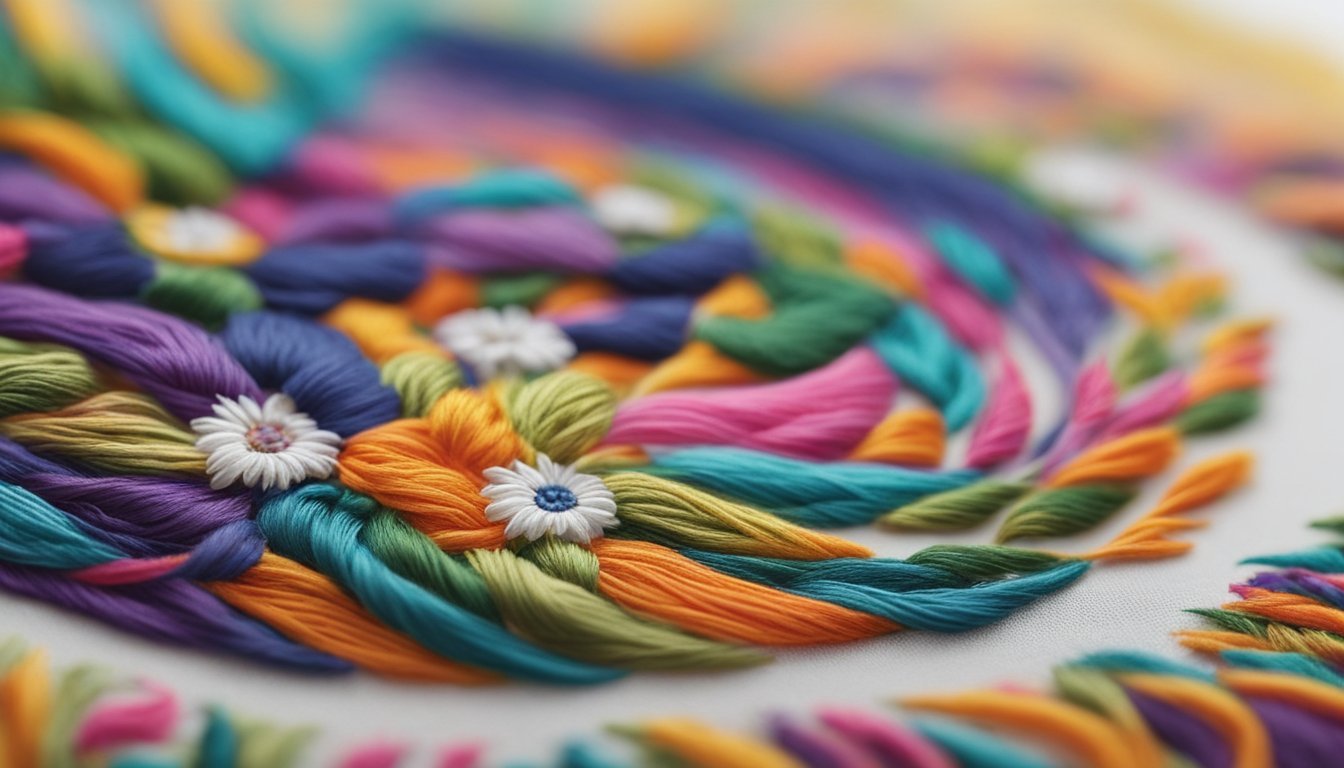
Whether you’re a beginner or have some experience, incorporating a few different methods can add depth and uniqueness to your work.
From intricate designs to simple accents, these techniques will inspire you to explore new possibilities.
Get ready to enhance your embroidery journey!
Sashiko Stitching
Sashiko stitching is a Japanese embroidery technique that uses a simple running stitch.
This method creates beautiful geometric patterns, often on indigo-dyed fabric.
Sashiko was initially a practical way to reinforce clothing, originating during Japan’s Edo period.
Farmers and fishermen developed it out of necessity.
Today, you can use sashiko to add unique designs to your projects, from quilts to home decor.
The repetitive stitch is relaxing and perfect for beginners.
You don’t need many tools to get started—just fabric, thread, and a needle will do.
Explore free patterns available online to inspire your creativity.
Sashiko also allows you to experiment with color and design while adding texture to your work.
Whether it’s a simple patch or an intricate design, this technique can enhance your embroidery repertoire.
2) Couching Technique
Couching is a fun and creative embroidery technique you can easily incorporate into your projects.
It involves stitching a length of yarn, cord, or ribbon onto your fabric.
The main idea is to hold the material in place with smaller stitches.
To start, mark a line on your fabric with a disappearing ink pen.
This will help keep your cording straight as you work.
Gather your supplies, including a needle that fits the thickness of your thread.
When ready, lay your yarn or ribbon along the marked line.
Bring your needle up from the back and catch the material with small stitches.
This technique creates textured and visually appealing designs that can enhance anything you’re working on.
You can experiment with various threads and colors, making couching versatile for any style.
Whether you’re adding a decorative border or creating bold lettering, this technique brings a unique touch to your embroidery projects.
Enjoy the process, and let your creativity flow!
3) Bargello Patterns
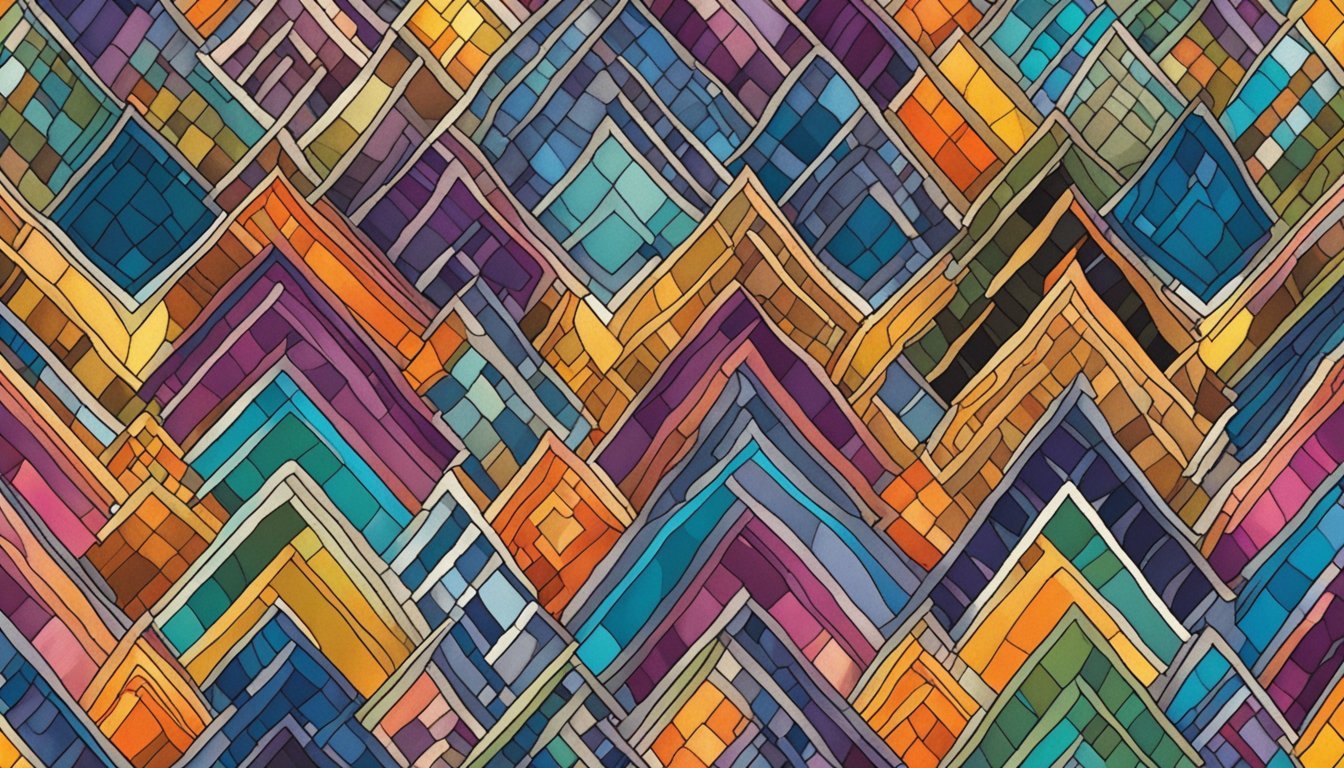
Bargello is a fun and vibrant embroidery technique known for its geometric patterns.
It’s perfect for creating colorful wall hangings, pillows, or decorative art.
To start, use a plastic or needlepoint canvas along with tapestry wool.
Choose a canvas size that matches your yarn for the best results.
A 10-mesh plastic canvas works well for beginners.
You can create various designs by following a simple stitch sequence.
Begin stitching from the bottom left corner of your fabric, covering specific threads to form the pattern.
This ensures your stitches stay aligned and create that signature wave effect.
When you want to change colors, weave your needle under previous stitches to add new thread.
This makes it easy to transition and keep your work looking neat.
With practice, you’ll get comfortable reading patterns and adapting them to your style.
Don’t hesitate to explore different color combinations.
The beauty of Bargello lies in the endless possibilities for customization and creativity.
It’s a great way to express yourself through your craft projects.
4) Hardanger Embroidery
Hardanger embroidery is a beautiful, traditional needlework technique from Norway that dates back to the 17th century.
It’s known for its stunning geometric patterns and symmetrical designs.
You’ll find that this style often features motifs like squares, triangles, and crosses.
Working with Hardanger involves precise stitching and a mix of cutwork and drawn thread techniques.
It’s perfect for adding depth to your projects.
Beginner or not, you can learn this craft with practice.
Start with Kloster blocks, which are satin stitch blocks that create the foundation around the lacy parts of your design.
Using evenly woven fabrics like linen or cotton will help your stitches stand out.
Plus, the whitework aspect adds a delicate touch, making your projects look even more impressive.
5) Blackwork Designs
Blackwork is a unique embroidery technique that uses black thread on a light fabric.
You can create stunning designs through a series of simple stitches.
This style often features intricate patterns that can be quite striking.
You can start with basic motifs like flowers or geometric shapes to build your skills.
Experimenting with thread thickness can add depth and texture to your projects.
Choosing a fabric that contrasts well with black thread helps your designs stand out.
You might want to look for free patterns online, as many resources are available to help you get started.
There are tutorials that guide you through the process, from simple designs to more complex pieces.
Each finished piece can showcase your creativity while preserving the traditional essence of blackwork.
With practice, you can develop your unique style within this rich embroidery tradition.
6) Redwork Techniques
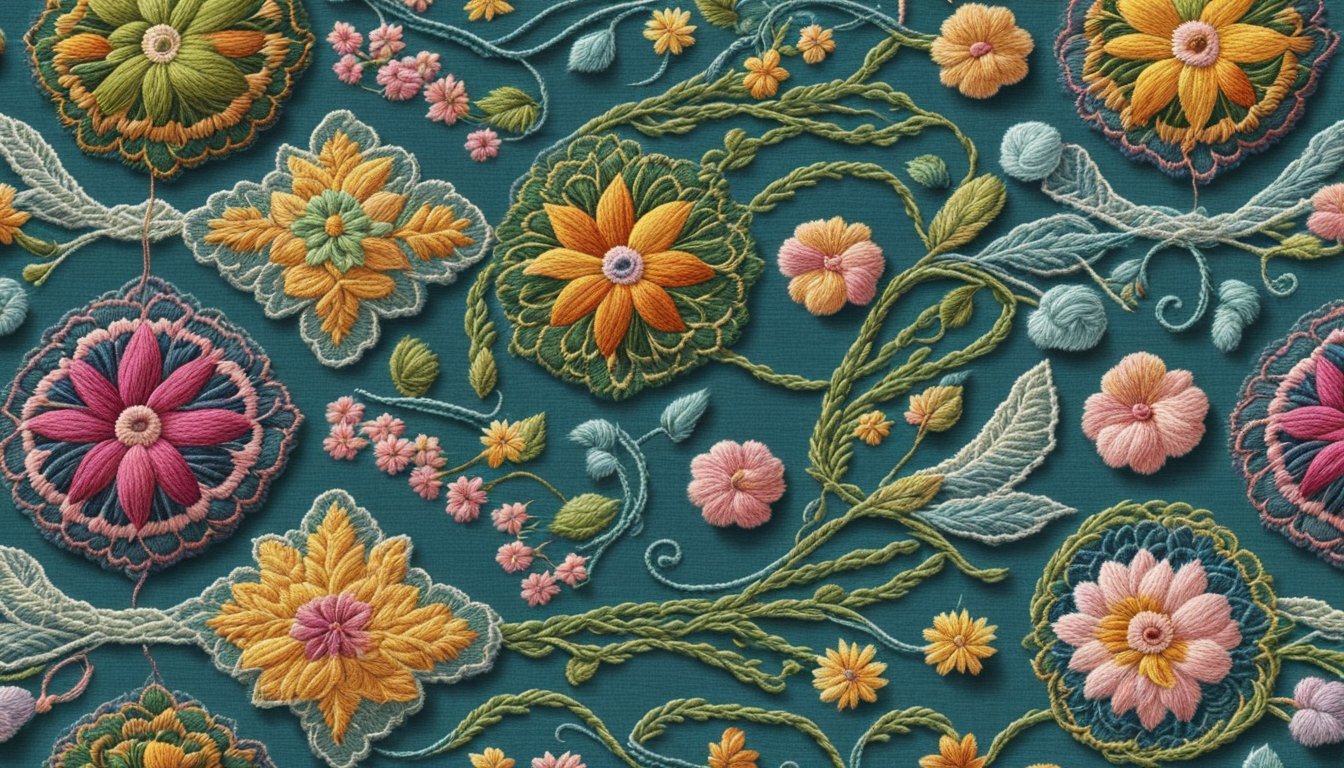
Redwork is a fun and accessible embroidery technique characterized by its simple, outline designs.
It primarily uses bright red thread, which gives your projects a distinctive and classic look.
To get started, the running stitch is your best friend.
This basic stitch allows you to create continuous lines that bring your designs to life.
It’s easy to learn and perfect for beginners.
You can also play with different patterns and imagery.
Farm scenes or floral motifs are popular choices that embrace the charm of redwork.
While traditional redwork uses only red thread, you might also explore “bluework” and “blackwork.” These variations maintain the same outline style but offer different color palettes to suit your taste.
Experimenting with redwork can add a unique touch to your projects.
Whether you’re making decorative pieces or gifts, this technique brings warmth and character to your crafts.
Enjoy the creative process and let your imagination run wild!
7) Stumpwork Embellishments
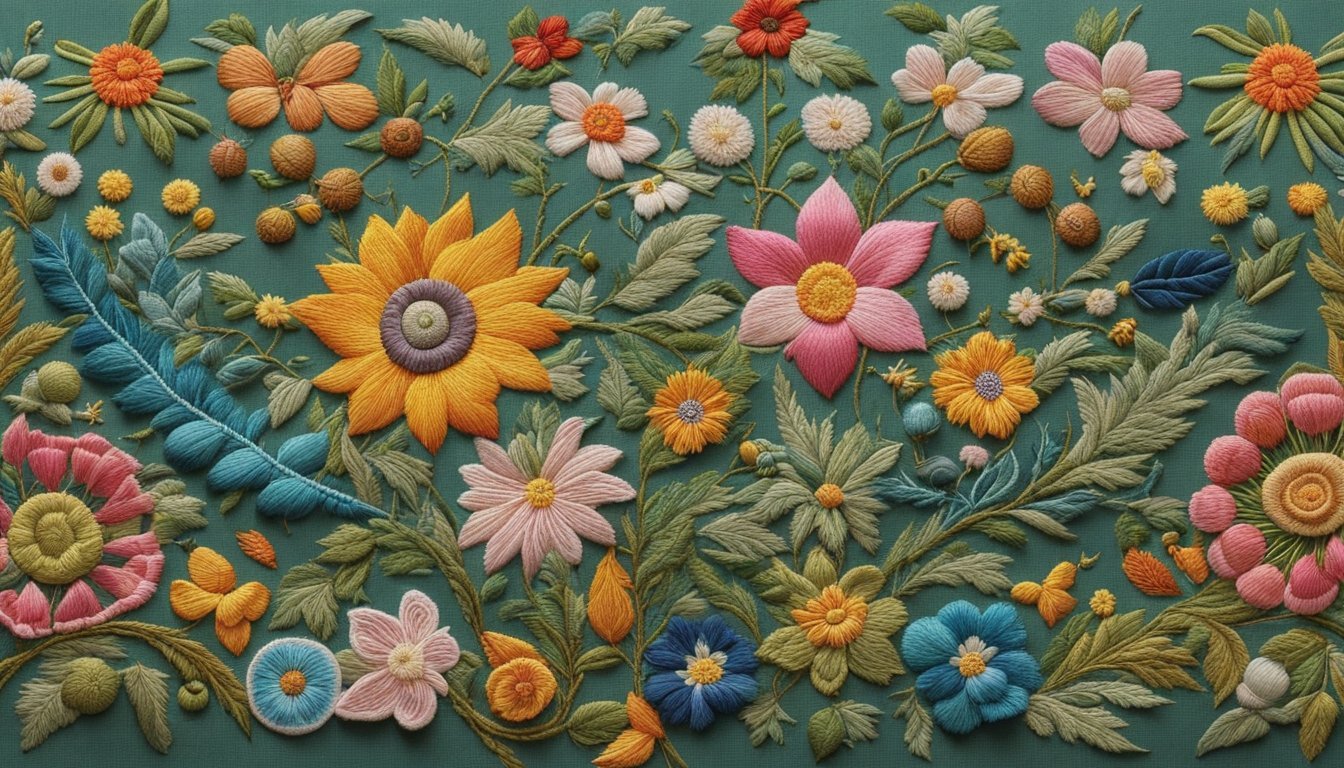
Stumpwork is a unique embroidery technique that adds a fascinating three-dimensional effect to your projects.
It focuses on raised stitches and can really bring your designs to life.
To start, you’ll outline your shapes with angled buttonhole stitches.
This gives you a solid base to fill in with long and short stitches for a soft, shaded look.
Cutting out the shapes carefully is crucial.
You want to get close to the edges without snipping into your stitches.
Adding an anti-fray product can help keep everything neat.
Stumpwork embellishments are great for nature-inspired scenes.
You can create beautiful floral designs or textured leaves that pop off the fabric.
This technique invites creativity, allowing you to experiment with wire work too.
This lets you secure individual elements onto your fabric, adding even more depth.
Using stumpwork can elevate your embroidery game and add a special touch to any piece.
It’s satisfying to see your work turn into something truly dimensional!
Understanding Basic Embroidery Stitches
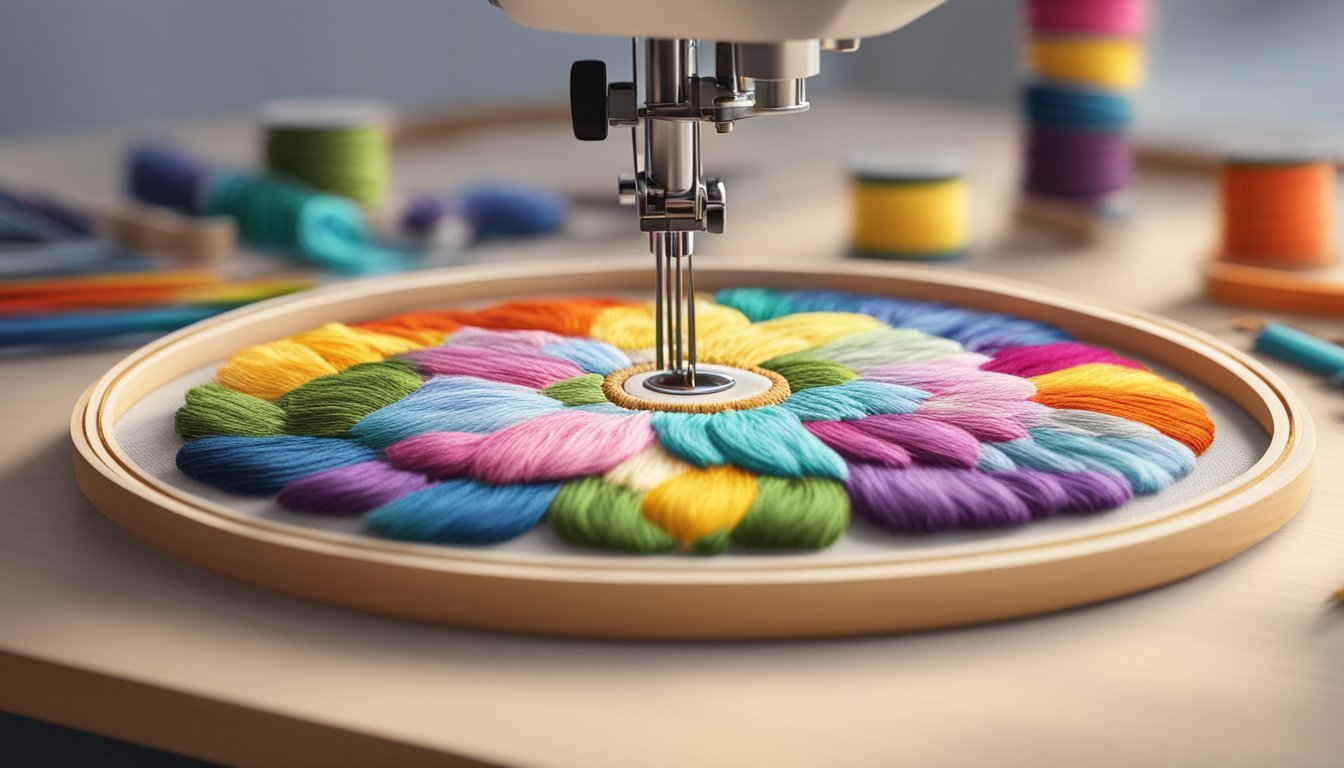
Embroidery stitches are the building blocks of your craft.
Mastering a few essential stitches not only enhances your projects but also boosts your confidence as you create.
Starting with Backstitch
The backstitch is a favorite among beginners for good reason.
This stitch creates a solid line and is perfect for outlining your designs.
To begin, bring your needle up through the fabric at your starting point.
Then, insert the needle back down a stitch length away.
Pull the thread through, and bring the needle back up through the end of the previous stitch.
Repeat this process to create a continuous line.
You can use the backstitch for both simple designs and intricate details.
It’s versatile and works great for lettering or floral patterns.
Practice will help you achieve an even tension, resulting in clean lines that really make your project pop.
Mastering the French Knot
The French knot adds a charming texture and dimension to your embroidery.
This stitch is often used for adding small details, like flower centers or decorative elements.
To make a French knot, bring your needle up through the fabric where you want the knot.
Wrap the thread around the needle two to three times, depending on how large you want the knot.
Hold the wraps in place and gently push the needle back through the fabric, keeping the wrapped thread taut.
Pull through until the knot sits snug against the fabric.
The French knot takes a bit of practice, but it’s a useful technique to have in your repertoire.
Play around with the number of wraps to create different knot sizes for varied effects.
Embroidery Techniques to Try
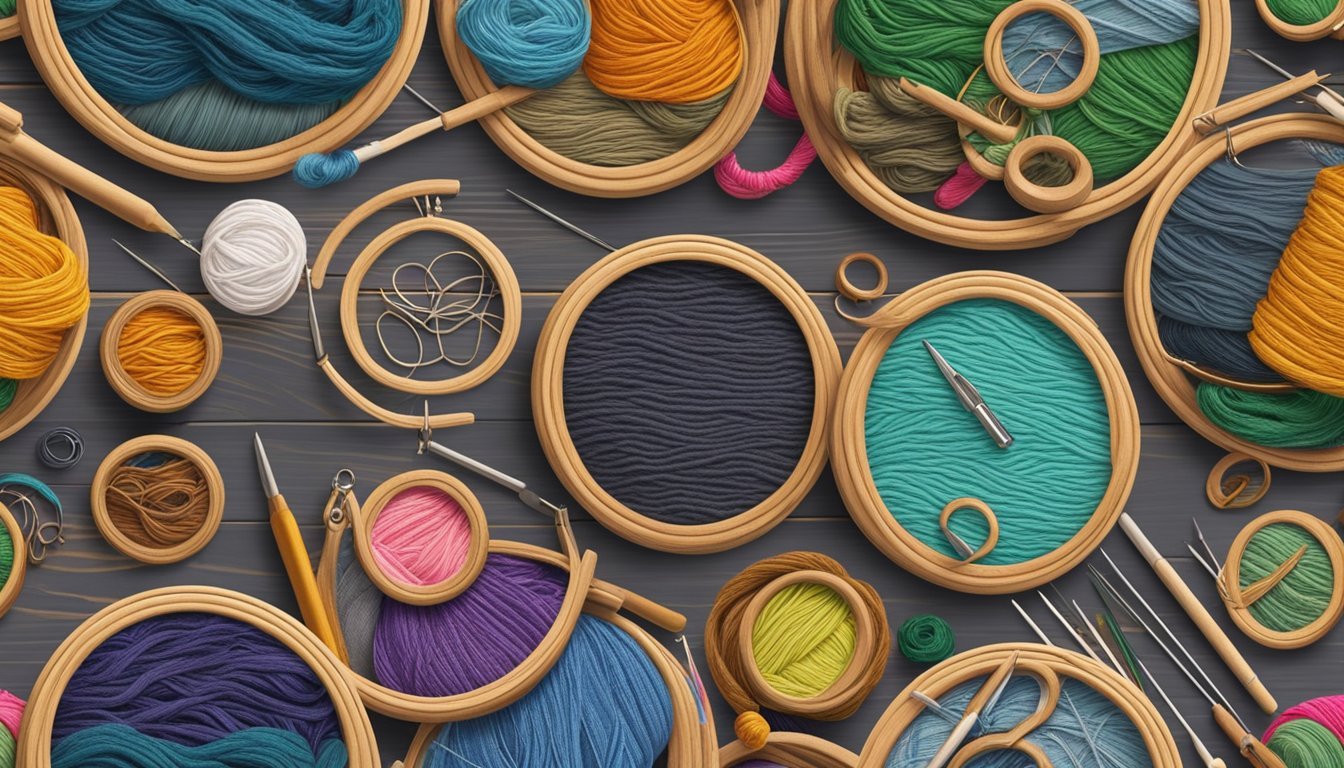
Embroidery offers a world of creativity through various techniques.
You can get hands-on with traditional methods or dive into more contemporary styles to enrich your projects.
Here are two techniques worth trying.
Exploring Sashiko
Sashiko is a Japanese folk art that combines functionality with beauty.
It originated as a way to reinforce or repair worn fabric but has evolved into a decorative stitching method.
Typically, Sashiko involves a simple running stitch.
You create intricate geometric patterns, often using white thread on indigo fabric.
This contrast creates a striking visual effect.
Start by drawing a design on your fabric with chalk or disappearing ink.
Use a single strand of thread and keep your stitches uniform in size for the best results.
This technique is great for adding texture and personal flair to your projects.
Plus, Sashiko is perfect for quilting and home decor, making it a versatile skill in your embroidery toolkit.
The Art of Brazilian Embroidery
Brazilian embroidery is known for its vibrant colors and three-dimensional designs.
It uses specialty threads and techniques to create lush, eye-catching visuals on fabric.
Key stitches include the bullion knot, which adds texture, and the lazy daisy, perfect for flower petals.
These create an inviting, almost sculptural look to your work.
To get started, choose colorful threads such as rayon or cotton.
They tend to reflect light beautifully, giving depth to your designs.
Layer your stitches to enhance the depth and richness of each piece.
Brazilian embroidery shines when you want to make flowers, leaves, and other natural motifs pop.
It’s an excellent choice for those looking to make their projects stand out.


